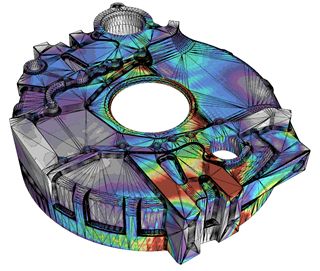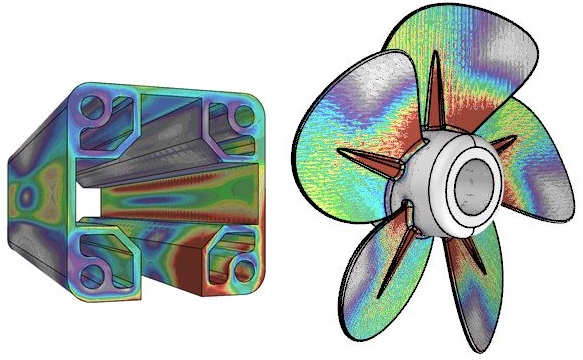Need a stress test? VisualARQ invites you to try Scan-and-Solve!
by Francesc Salla | Sep 26, 2014 | Articles

VisualARQ and Scan-and-Solve complement each other in architectural projects. Image: Intact solutions.
The pleasure of creating. This is one of the main reasons that fuels architects’ vocations. Imagining something and bringing that idea to reality by applying technical knowledge.
You have an idea in your head – an office building, a public square, a villa, a school. Your hand moves over the paper and outlines a sketch. Then, you enter some data through the keyboard and start contemplating on a screen how what before was just an intangible product of your creativity takes shape.
So far, so good. Your model looks excellent (don’t forget you are using
VisualARQ).
Models are great, they can bear everything. If you are a Rhino user, we can’t imagine the complexity and sophistication of the structures you might have been designing. However, at some point, you must have had to
check how those structures responded.
Don’t forget that you are an architect. Your buildings will have to be built with concrete, steel and glass. And the big question is: “will they work as expected”?
We can’t tell you that, but there is a Rhino plug-in that can give you the answer to this question. With
Scan-and-Solve, you will be able to check the behavior of your model.
- You will get a structural analysis of any Rhino solid model
- You will be able to see the deformations caused by the loads
- You will get a stress analysis
- You will be able to detect object deformations as a result of their own weight
- It will work for all types of solids: polysurfaces, extrusions, meshes…
- You will be easily able to compare the results of the variations you make on your model
- You will be able to use different materials from a long list: cement, cast iron, glass, plastics…
We are now far away from those times when a software requested some previous work on the geometry in order to run a
Finite Element Analysis (FEA). There is no more need of that. Forget the meshing, the translation or the simplification processes.
Not that
Scan-and-Solve works as if by magic, but close enough. To begin with, being it a Rhino plug-in, you won’t have to export or import anything. As fast and transparent as that.
Scan-and-Solve works in such a simple way that it is almost magic.
You just have to follow 3 steps:
- Select the material
- Choose the restrictions you are going to apply
- Specify the loads on your model faces.
Then, just click “go” and that’s it!
How long will you have to wait to see the outcome? It depends on the resolution you have chosen and on how complex your model is.
If you don’t own this program yet and we haven’t convinced you about its quality, you can download a trial version (or a student license) or
check the videos from the manufacturer (Intact Solutions).
If you are a current user, do you have the 2014 version? It includes several improvements and now it supports automation through
RhinoScript.
Now, here comes another big question: “
is it possible to analyze VisualARQ objects with Scan and Solve?”. Yes, it is, but an additional step is required.
VisualARQ architectural objects (beams, columns, walls, etc…) are in fact Rhino blocks, with some parametric properties which allow to edit them numerically. Scan and Solve can’t analyze Rhino blocks straightaway. We need to convert VisualARQ objects into polysurfaces. We can do this just by exploding them, using the Rhino “Explode” command. That way, VisualARQ objects will lose their parametric properties, but at least we will be able to analyze their stresses with Scan and Solve!
Why are we explaining the qualities of a software that we don’t even sell nor develop? Because we at VisualARQ want to introduce you to the
technology you need to work, so that you can focus on designing with freedom.
Remember, it’s all about the pleasure of creating.

Scan-and-Solve for Rhino generates stress tests of any solid and provides a structural analysis of architectural objects

If you want to share your results with us, we will love to see you on
Facebook.


 If you want to share your results with us, we will love to see you on Facebook.
If you want to share your results with us, we will love to see you on Facebook. 